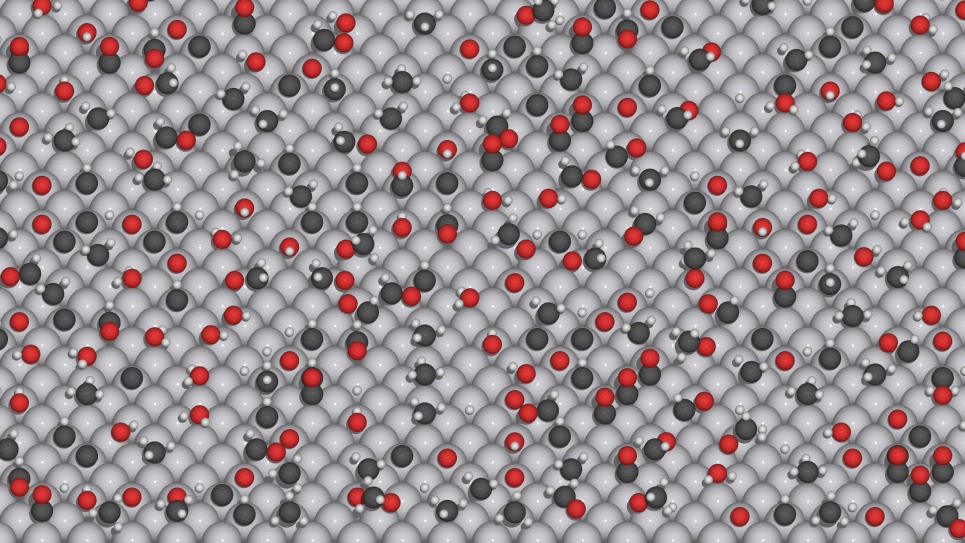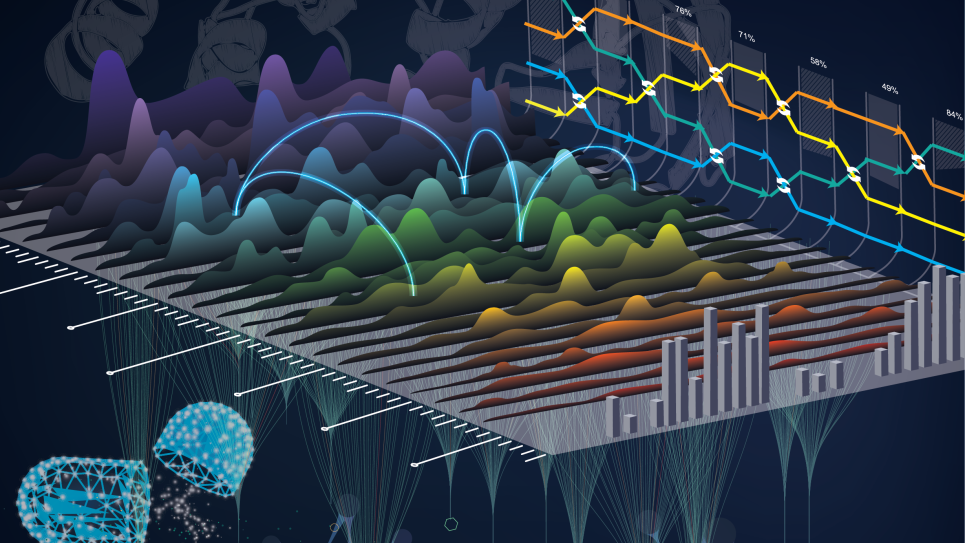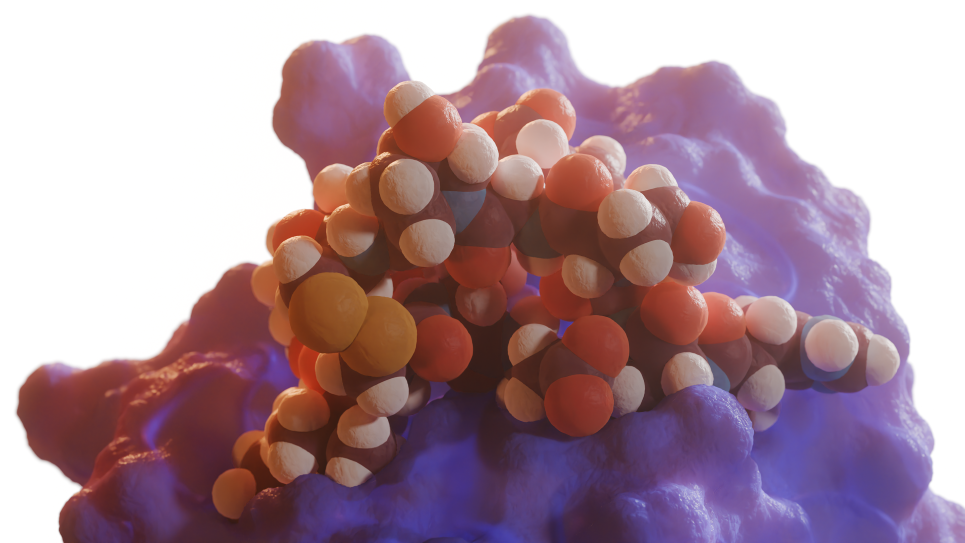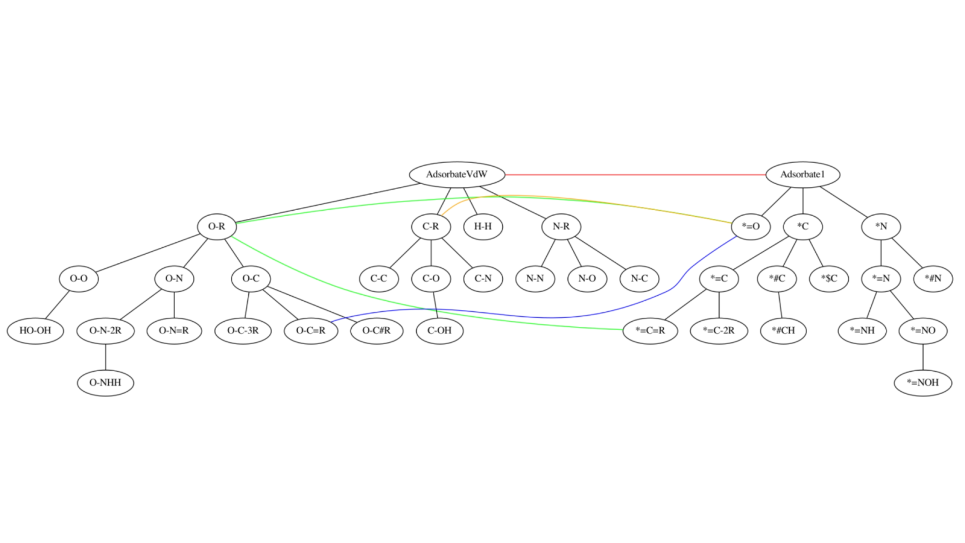
Data science techniques will be used in combination with quantum chemistry simulations to explore the otherwise intractable phase space resulting from gas phase molecules on catalyst surfaces to find relevant configurations and the lowest transition states between them. Image: Eric Hermes, Sandia National Laboratories


